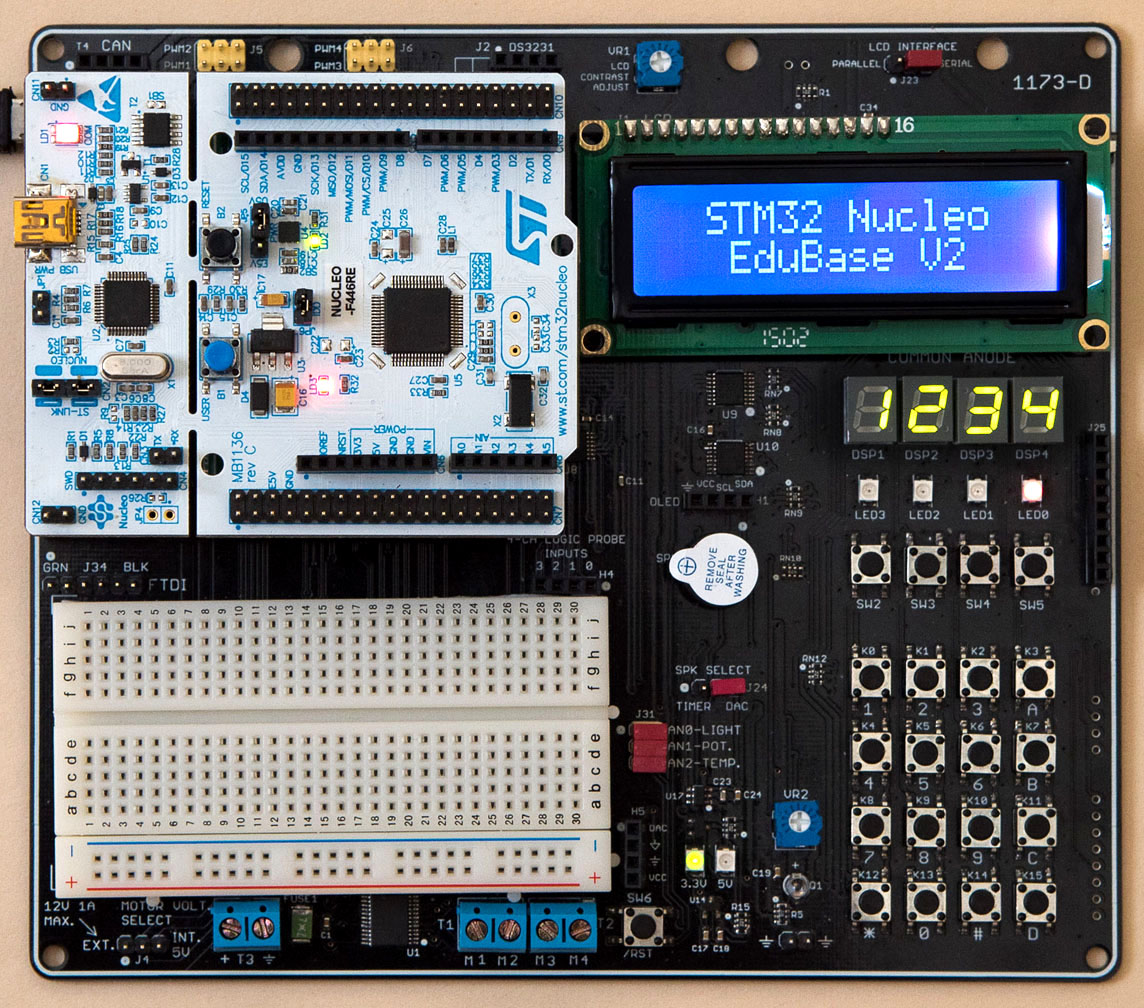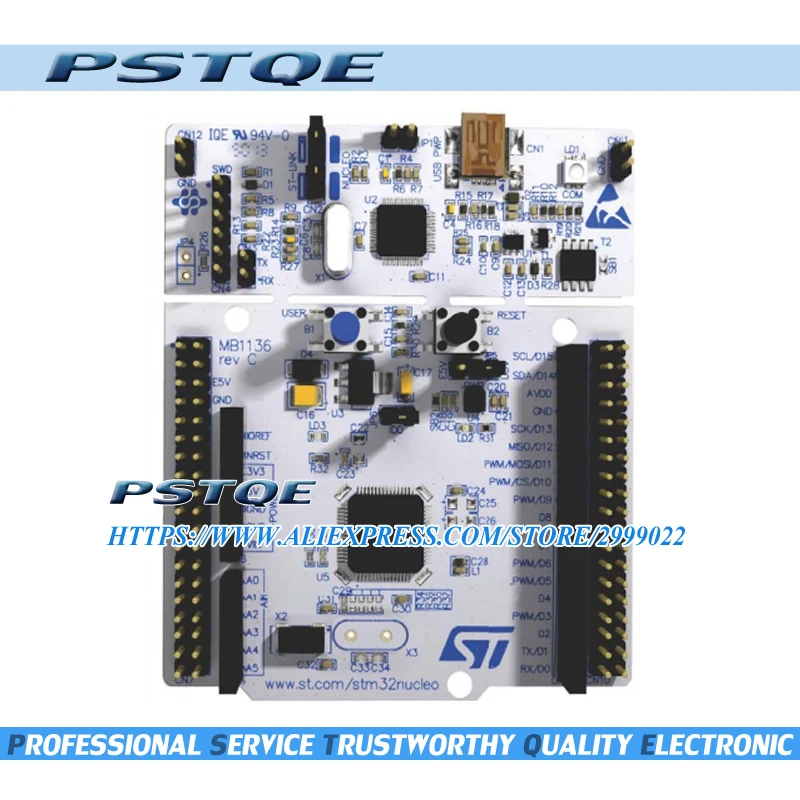

- NUCLEO F446RE I2C PINS HOW TO
- NUCLEO F446RE I2C PINS SERIAL
- NUCLEO F446RE I2C PINS FULL
- NUCLEO F446RE I2C PINS OFFLINE
- NUCLEO F446RE I2C PINS PROFESSIONAL
Flashing Nucleo F446RE board includes an ST-LINK/V2-1 embedded debug tool interface. Features Common features STM32 microcontroller in an LQFP64 or LQFP48 package 1 user LED shared with ARDUINO 1 user and 1 reset push-buttons 32.

NUCLEO F446RE I2C PINS SERIAL
Serial Serial pc(SERIAL_TX,SERIAL_RX) problem. Applications for the nucleof446re board configuration can be built and flashed in the usual way (see Building an Application and Run an Application for more details). STEM Unique Fully Open Source Educational Robot - Apeiros Solution to question 1 The PWM-pin combinations are stored in: AppDataLocalArduino15packagesSTM32hardwarestm321.9.0variantsNUCLEOF446REPeripheralPins.c. Nucleo Repeated Start of I2C does not work. Configure the I2C PINs for ALternate Functions a) Select Alternate. Ticker Weird Ticker Behavior Inside Class This tutorial will cover both transmission and reception using the I2C in STM32.
NUCLEO F446RE I2C PINS OFFLINE
Offline CoIDE mbed offline compile F401RE HID reading doesn't work - nucleo STM32F401RE Nucleo Flashing and running STM Nucleo board in Linux SERIAL_TX SERIAL_TX SERIAL_RX: not recieving data from STM32F401 but im still confused, is there no sign or something which one is pin.0 or pin. my microcontroller is STM32F446RE which means i have 64 configured pin. Quadrature Nucleo F401RE and Quadrature encoders im sorry im still beginner here,so i got confused. If you are completely new to the STM32 Nucleo64 Development Boards, do check out this Nucleo64 Review video to understand the basics of this board before you proceed further.
NUCLEO F446RE I2C PINS PROFESSIONAL
SevenSegmant_stopwatch sevenSegmant_stopwatch Nucleo64 Development Boards are low cost and easy to use platform for professional developers as well as for hobbyist. You need to log in to post a discussion Discussion topics Topic
NUCLEO F446RE I2C PINS HOW TO
This video shows how to get started with ARM mbed Integrated Development Environment using STM32 Nucleo platform: We can use any one of these pins as a digital input or digital. These headers give access to all STM32 pins. According to the above table, this STM32 Nucleo board has 51 general purpose input-output pins.

ARMmbed/mbed-os repository on GitHub ( up-to-date version, used with mbed CLI commands).You can find more details on the available pins and labels in the PeripheralPins.c and PinNames.h files. Mass storage (USB Disk drive) for drag'n'drop programming.USB re-enumeration capability: three different interfaces supported on USB.Right click on mbed.lib in you project and select ''update''. The issue was raised on github (see here) and has been addressed in a new revision of the library. Hi Jan, there is a problem with the I2C on (some) ST platforms (see here ). Deploy a Simulink ® model to blink the onboard LED on an STM32 Nucleo F401RE board using the Embedded Coder Hardware Support Package for STMicroelectronics ® STM32 Discovery and STM32F4xx processor-based boards. Pick a board that has I2C pins exposed and make a note of their numbers and locations. Using Simulink with STM32 Discovery and STM32F4xx-Based Boards. USB VBUS or external source (3.3 V, 5 V, 7 - 12 V) 1 Answer Wim Huiskamp 5 years, 8 months ago. Now we will connect the I2C slave board that will receive the data from the master board.Selection-mode switch to use the kit as a standalone ST-LINK/V2-1.On-board ST-LINK/V2-1 debugger/programmer with SWD connector.
NUCLEO F446RE I2C PINS FULL
STMicroelectronics Morpho extension pin headers for full access to all STM32 I/Os.GPIO (50) with external interrupt capability.On the next part of this tutorial, I will show you how to include a button to control the blinking of the LED. Here’s the video showing the LED blinking: The LED still blinks if I change the pin name from D5 to PB_4 (which is standard STM32 naming): #include "mbed.h" Then I created a program that blinks the LED faster and faster: #include "mbed.h" I attached an LED to D5 using the Grove shield:

With knowledge on the pin names, I am ready to create some more programs. This gives us an additional 76 pins to work with, much more than the Arduino Mega! In fact, you can use the same pin names (A0, A1, etc.) when programming in Mbed.Īgain, the similarities with the Arduino UNO is still there, making the Nucleo board compatible with Arduino shields.īesides the Arduino headers, there are also Morpho headers which gives the user access to all of the pins of the STM32F10RB: You’ll see that the pin assignments is very much like the Arduino UNO. The ST Nucleo F103RB page on the Mbed website contains information about the Arduino header pins of the board. Now we will dig deeper on the pinout and other functionalities of the board. On the previous tutorial, we managed to create our first program with the STM32 Nucleo board.


 0 kommentar(er)
0 kommentar(er)
